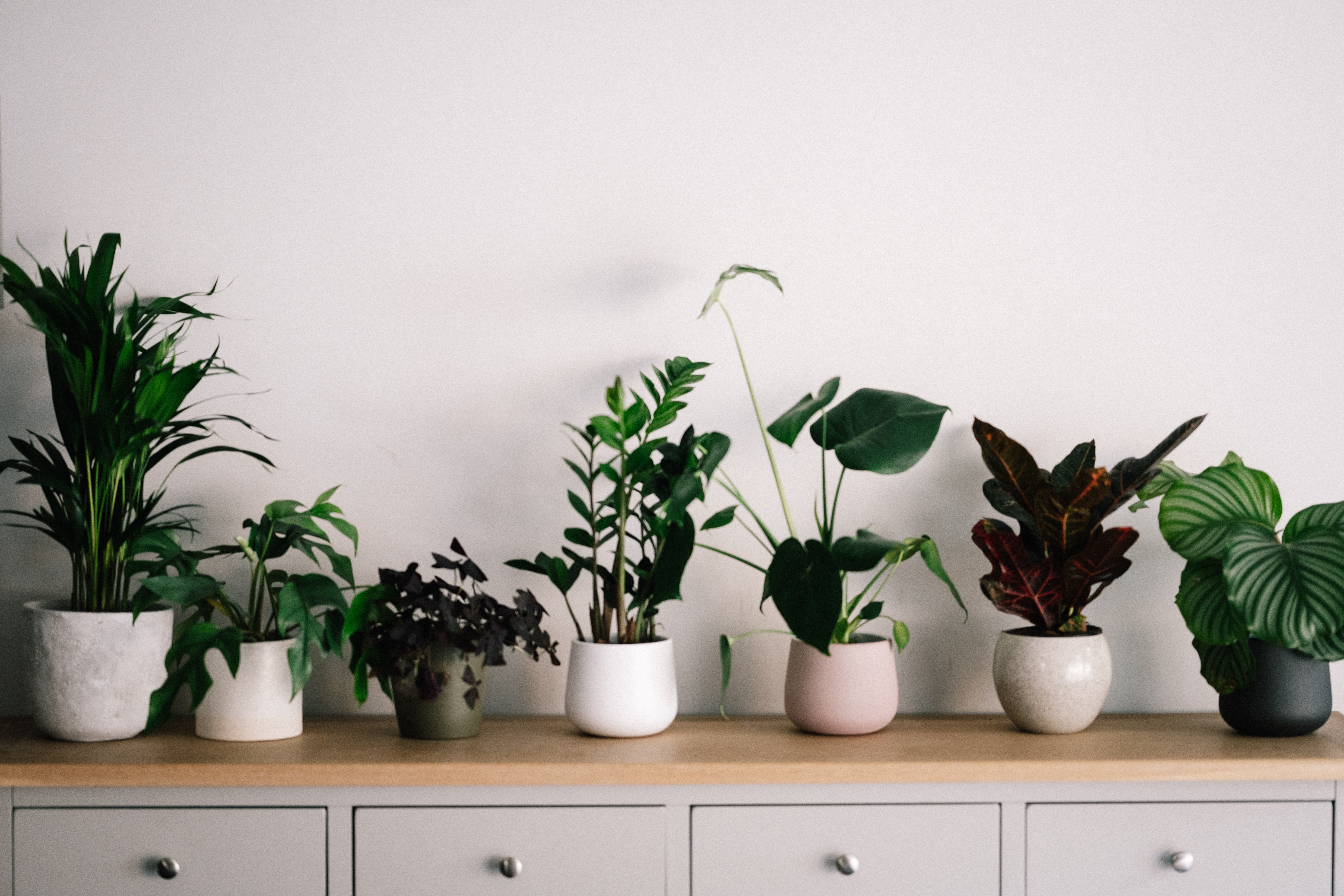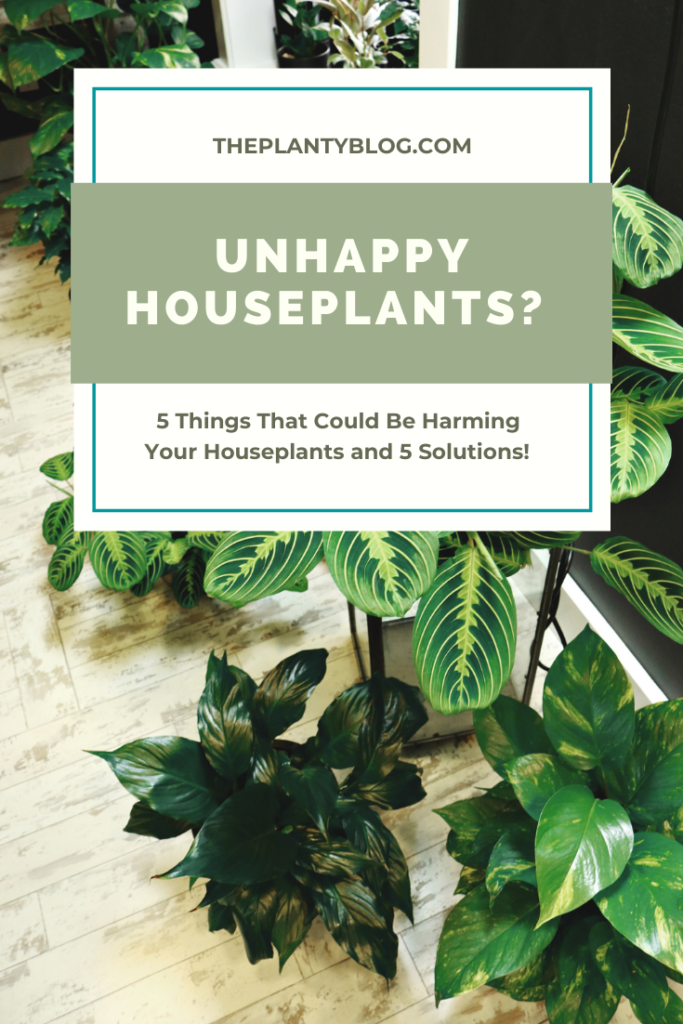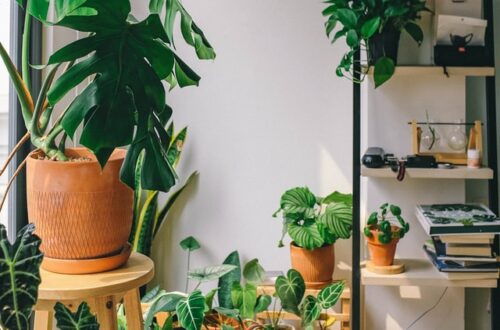Unhappy Plants? Here’s How to Save Them!
5 things that may be harming your plants, and 5 Solutions to make them happier.

You did it! You’ve finally brought home your new houseplant, you know the basics of watering and plant care…but your plant is still unhappy! You thought you did everything right, but your plant just doesn’t look like it’s enjoying its new conditions. At some point or another, all plant parents need to pull out their imaginary magnifying glass (or hey, a real one!) and solve the mystery of your unhappy plants. It can be confusing and certainly frustrating.
Before we begin, here are some signs of an unhappy plant to look out for:
- Browning tips
- Drooping, sad leaves
- Curling leaves
- Crispy leaves
- Leaves yellowing excessively
- Mushy leaves at the base of the plant
Here are 5 factors that you may not have considered, that could be causing your plant stress:
1. Humidity: Too Much or Not Enough
Depending on the variety of plant and where it tends to grow naturally, different plants have different humidity requirements. A succulent, for example, will be unhappy in a consistently moist, humid environment, while the thinner foliage calathea will crisp in drier conditions. Research your plant’s humidity requirements and act accordingly. You may need to move the plant to a drier space in your house, or take measures to supplement the humidity. Some ways to do this include a pebble tray, misting or a humidifier. Your unhappy houseplant will surely thank you for it!
SOLUTION: See my tips for increasing humidity for some great ideas!
2. Draft/Temperature
Is your houseplant near a vent or a frequently opened window? Maybe the window is not frequently opened, but it tends to get a little cold or draft-y in the wintertime. Dry hot or cold air can cause yellow, brown, crispy leaves in your houseplant, making it appear to be very unhappy. It can also contribute to unbalanced humidity levels in certain spaces. One of the greatest challenges for plant owners is that in most North American homes, windows are often placed near an air vent. Now some hardier plants may not be affected by this, but it is certainly damaging to more sensitive houseplants. Most houseplants are used to either tropical or desert conditions, so temperature can also be a factor. Generally, tropical houseplants are happiest between 60 and 75 F (or 15 to 24 C) .
SOLUTION: A great indicator for both temperature and humidity is a temperature gauge. They can be found inexpensively on Amazon and will read both the temperature and humidity of the space around your plant. If that’s not in your budget, simply make sure that your plant is moved away from any vents or harsh airflow. If you’re comfortable doing so, close the vent to that particular area.
3. Light Intensity: Too Much or Not Enough
Contrary to what some Pinterest articles may say, low light does not equal no light. Plants do require light to photosynthesize. It’s essentially food for your houseplant. If the plant receives no light whatsoever, it will slowly starve to death. To save itself, you may see it reaching to absorb as much light as possible, giving it a leggy and spread out appearance with sparse growth and smaller leaves. This will weaken the plant overall, since it will have to work harder to get water to each of those spread out leaves. Less light and photosynthesizing also slows the process of the plant absorbing water, making it prone to overwatering and root rot.
On the other hand, too much sunlight, or direct sunlight that’s beaming down on plants that are not designed to handle it, will make your plants very unhappy. Too much light may burn the leaves or cause discolouration. You might notice the leaves curling to protect itself as well, particularly in calatheas. Not only that, but it can also cause them to dry out too quickly for you to keep up with the watering.
THE SOLUTION: Research your plant’s light requirements, and understand the difference between bright indirect, medium light, low light, and direct sunlight. If you live in a dark home, never fear! You can simply incorporate a few grow lights into your home.
4. Root-Bound/Pot-Bound
If your plant has outgrown its home, it’s likely going to look sad. If the roots are crowded, there will be less soil to reserve water as your plant needs it. As a result, it may need more frequent watering as it will dry out faster. Some plants do enjoy being a little crowded, but there be a point where the roots are too crowded, causing your houseplant to be unhappy. Check your plants roots. Are they tightly packed together? Have they taken the complete shape of the pot they are living in? Are they poking out the drainage holes or the tops of the soil? If so, your houseplant is unhappy because it is time to be repotted.
SOLUTION: Repot your houseplant. The general rule of thumb is to repot into a pot that is approximately two inches larger than its previous home.
5. Soil Incompatibility
You very well could be watering your plant correctly, but your soil and pot choices might be working against you and setting you up for failure. A heavy and dense soil mixture may be suffocating your plant if it prefers a drier environment, or if has a delicate root system. Even if you are modest in your watering practices to compensate, your plant can easily be overwatered in dense soil. And we all know it’s very difficult for a plant to survive overwatering. On the other hand, your potting media may be draining too quickly if your plant prefers consistently moist soil. If the soil drains too quickly, your plant will need more frequent watering. Both conditions will result in unhappy plants.
SOLUTION: Examine your soil quality in relationship to your plant’s watering needs. If your soil needs more drainage, you can add more orchid bark, perlite or pumice to your mixture. If your soil is too chunky, you can add a bit more potting mix, or move your plant into a ceramic pot, which will help retain the moisture longer.
*Do not eliminate drainage altogether, as that is a one-way ticket to root rot, regardless of the type of plant that you have.
It’s all a learning experience!
These particular plant care necessities often fly under the radar to new plant parents (or even seasoned plant collectors). It’s always a great reminder to step back and assess your plant’s environment, and how it might be working against you. Even if you are only interested in plants as décor, having a crispy or yellow plant or unhappy plants in general is definitely not going to be appealing. Hopefully identifying these problems and solutions will help you maintain happy houseplants!
Be sure to check out my houseplant index for deep dives into plant care for a variety of popular houseplants and follow me on Instagram for more on my personal plant journey and collection. I also give a heads up when new blogs are about to be posted, so it is something you do not want to miss!


